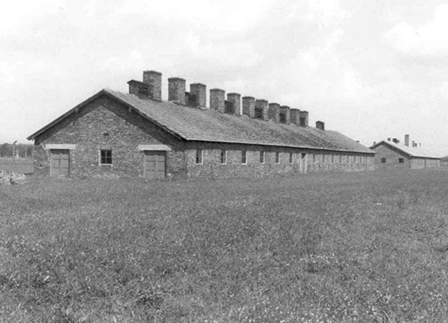- Brief Narrative
- Granite blocks quarried from the site of Mauthausen concentration camp in Austria. In March 1938, Germany annexed Austria in the ‘Anschluss’, and in April established the Deutsche Erd- und Steinwerke (GmbH-DESt, German Earth and Stone Works Inc.) to exploit the labor of concentration camp prisoners. In August, a concentration camp was established three miles from the town of Mauthausen, near the Wiener Graben stone quarry. Built by prisoners detailed from Dachau concentration camp in Germany, it originally functioned as a forced-labor camp, and later became a transfer point to subcamps and a site for mass killings. The Granitwerke Mauthausen (Mauthausen Granite Works) soon became the largest and most productive site of the German firm. Most of Mauthausen’s prisoners who were not killed or infirm immediately upon arrival worked in the stone quarry, which was only accessible by walking down 186 steps, known as the “Stairs of Death.” Prisoners under SS control were subject to “extermination through work,” and many died or were killed in the quarry as a result. Under harsh treatment from the guard of SS and Kapos, prisoners in the ‘Strafkompanie’ (the penal company) had to carry large, heavy blocks of stone up the steps to the top by hand. During the summer, prisoners worked 11 hours a day, and in the winter, 9 hours a day, and had inadequate food, clothing, and sanitary conditions. The SS abandoned the camp on May 3, 1945 and US troops arrived on May 5. After liberation, the US Army collected documentary and photographic evidence in preparation for war crimes trials, which camp prisoners had saved and smuggled out of the camp, despite immense risk to their own lives.
- Date
-
manufacture:
after 1938 April-before 1945 May 05
- Geography
-
manufacture:
Mauthausen (Concentration Camp);
Mauthausen (Austria)
- Credit Line
- United States Holocaust Memorial Museum Collection, Gift of the Mauthausen Memorial Museum



